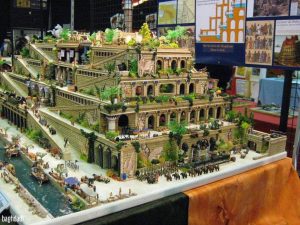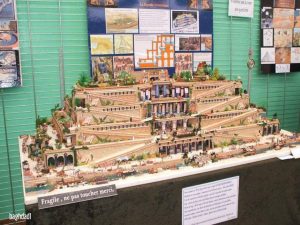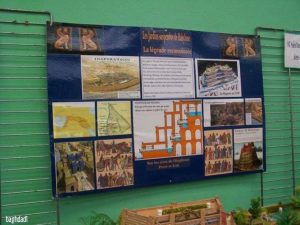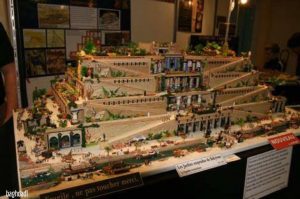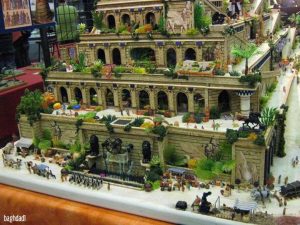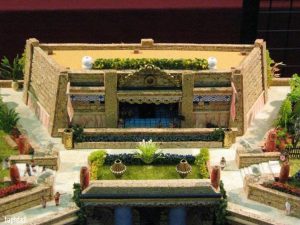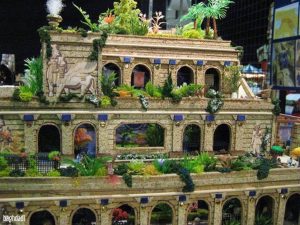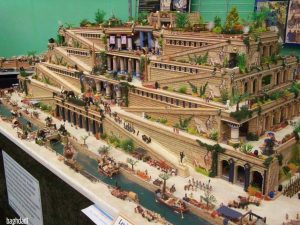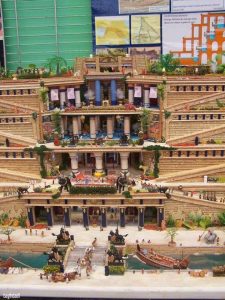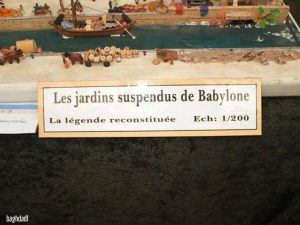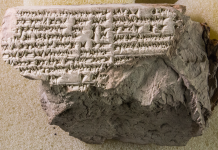Paris France – June 2016
Artists and architects from France converged to build this beautiful Hanging Gardens of Babylon. Reflecting the ingenious mind of the Chaldean people, native people of Mesopotamia Iraq.
“The Chaldean Marvel of Mankind”
The Hanging Gardens of Babylon, one of the Seven Wonders of the Ancient World, is the only one whose location has not been definitively established.[1]
The Hanging Gardens were a distinctive feature of Chaldean Babylon. They were a great source of pride to the people. Possibly built by Chaldean King Nebuchadnezzar II in 600 BC, the gardens are believed to have been a remarkable feat of engineering: an ascending series of tiered gardens containing all manner of trees, shrubs, and vines. The gardens were said to have looked like a large green mountain constructed of mud bricks.
Traditionally they were said to have been built in the Chaldean city of Babylon, near present-day Hillah,Babil province, in Mesopotamia Iraq. The Chaldean Babylonian priest Berossus, writing in about 290 BC and quoted later by Josephus, attributed the gardens to the Neo-Babylonian Chaldean King Nebuchadnezzar II, who ruled between 605 BC and 562 BC. There are no extant Babylonian texts which mention the gardens, and no definitive archaeological evidence has been found in Babylon of the Chaldeans.
According to one legend, Chaldean King Nebuchadnezzar II built the Hanging Gardens for his Median wife, Queen Amytis, because she missed the green hills and valleys of her homeland. He also built a grand palace that came to be known as “The Marvel of Mankind”.
